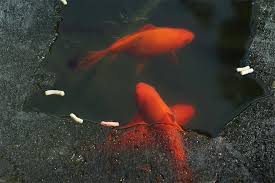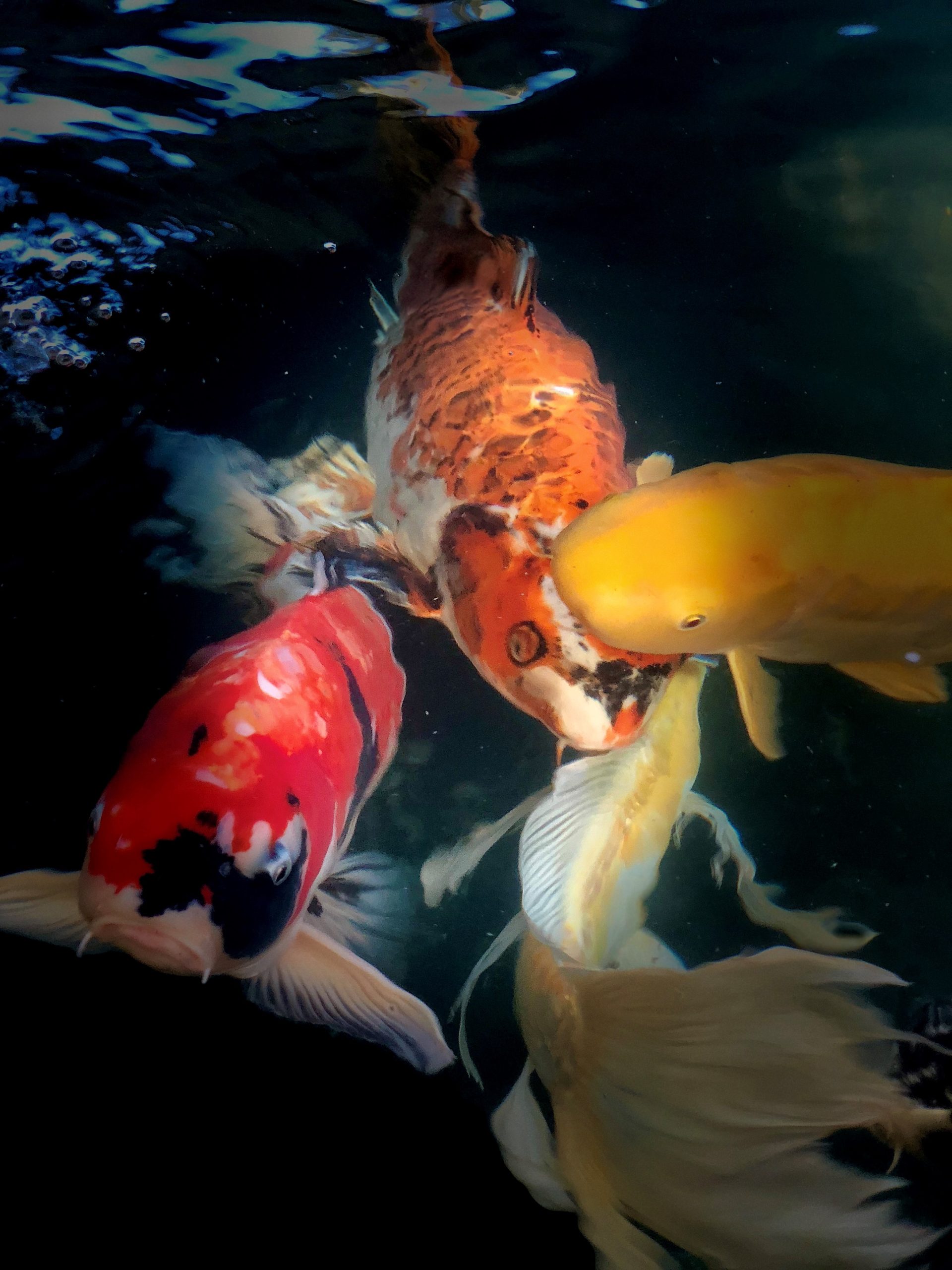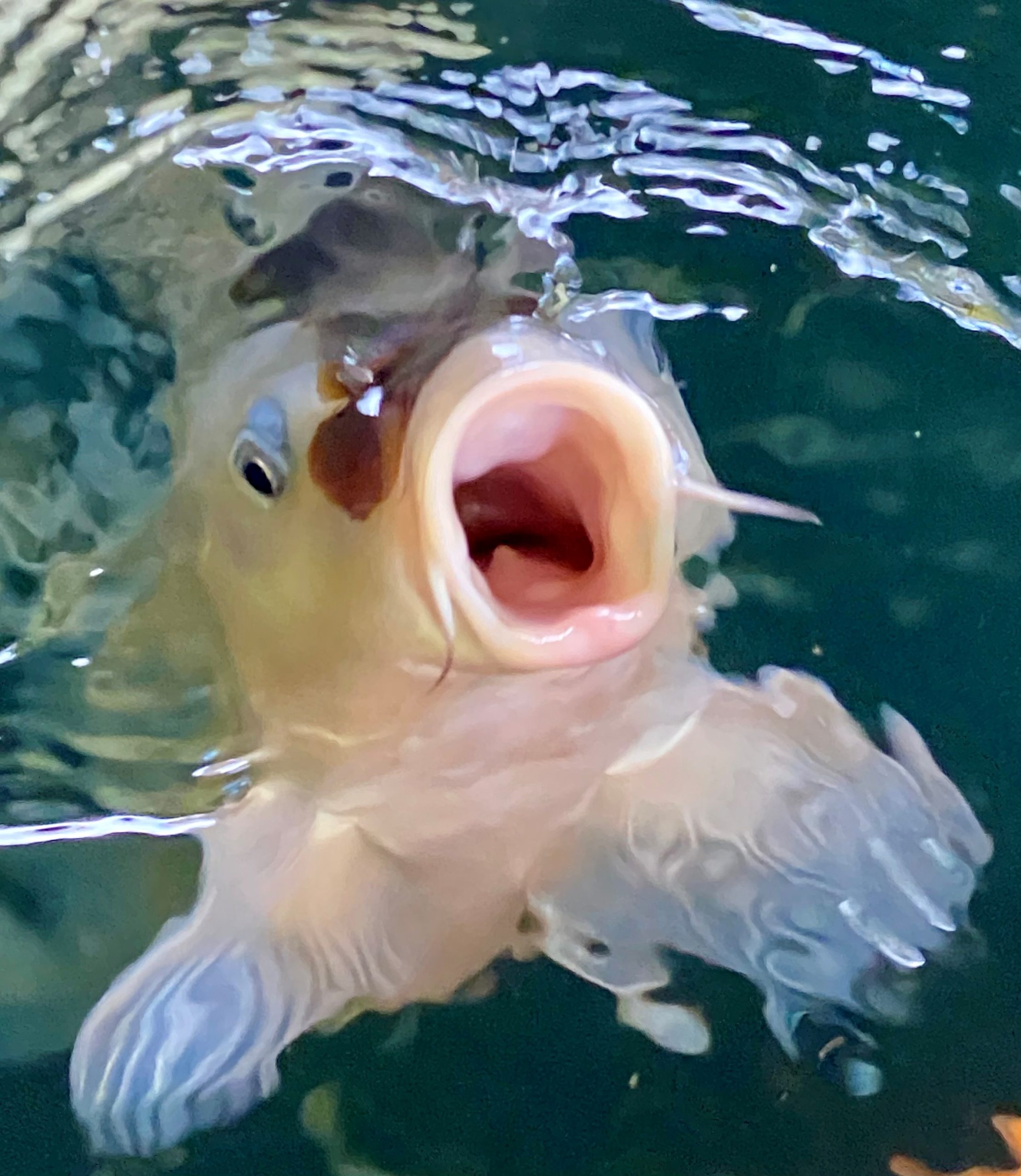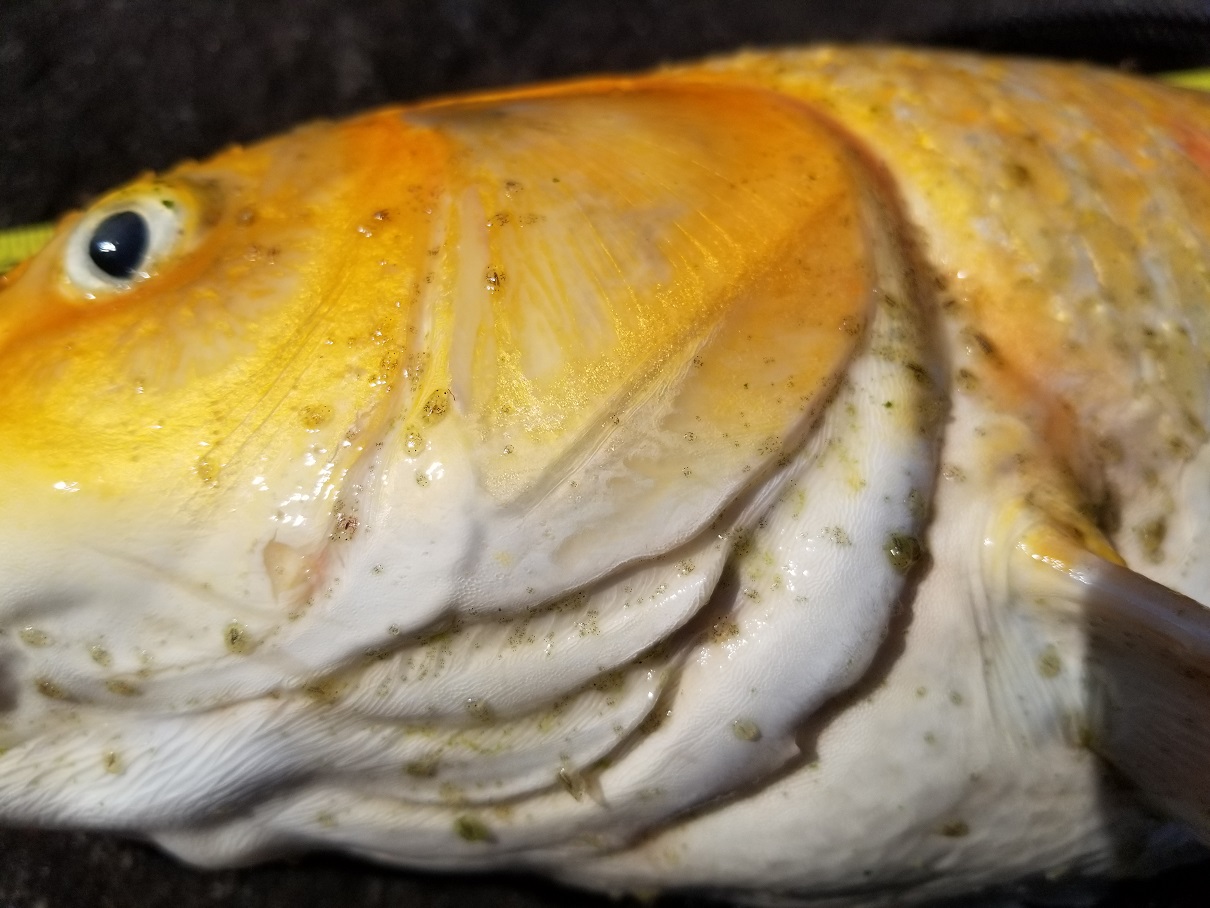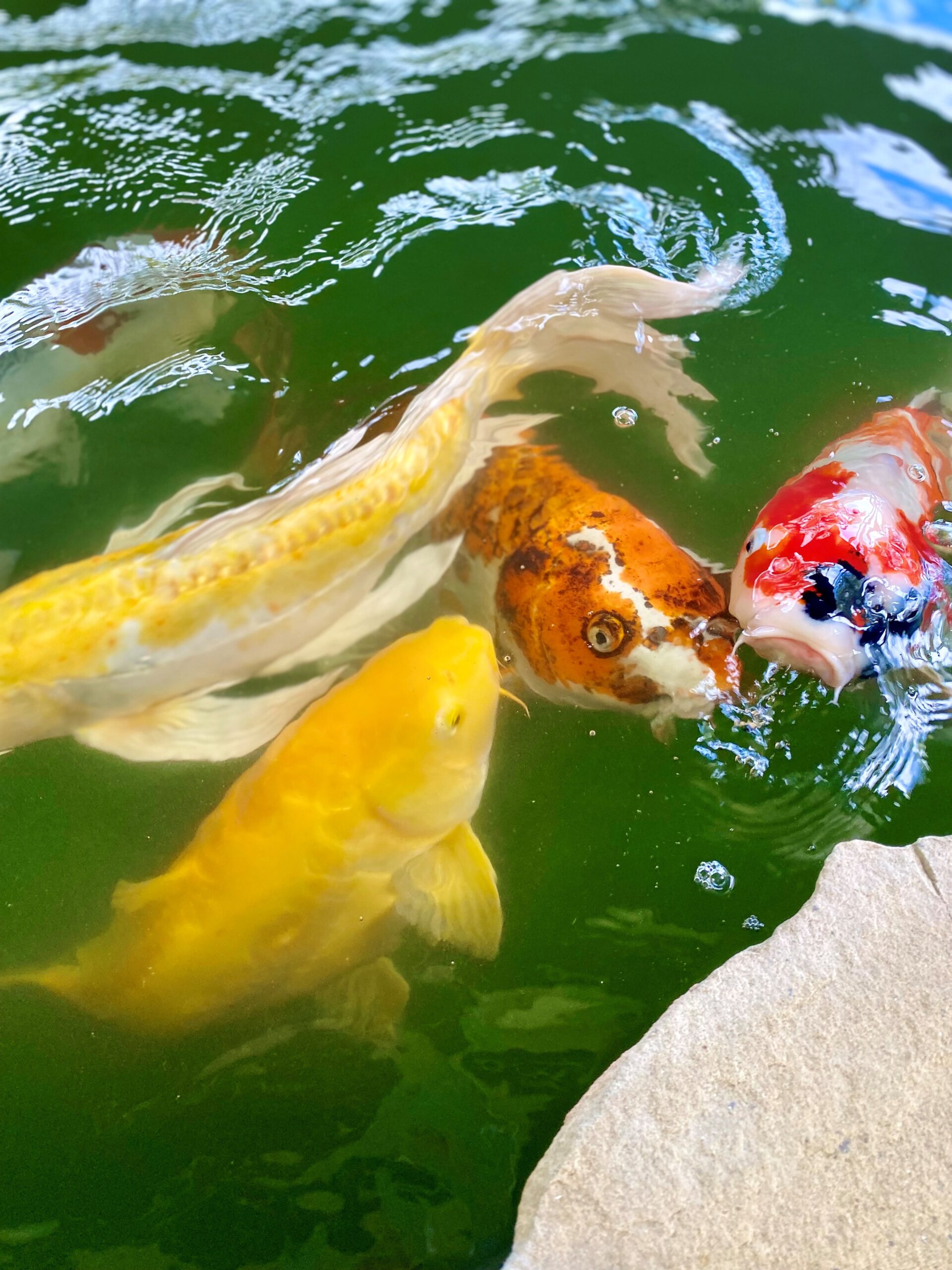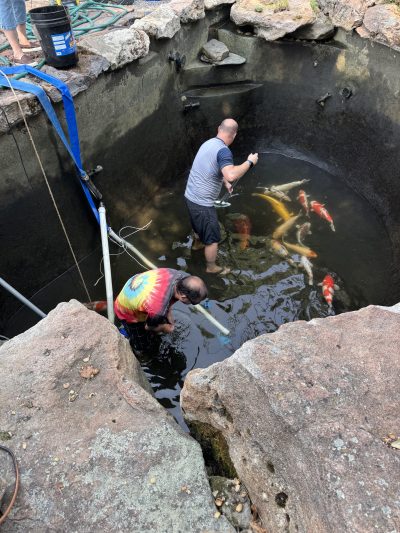
From now on, this is a difficult time to treat your pond. The “big guns” (such as Microbe-Lift/BSDT) cannot be used in the pond if your water has dipped below 50°F. And, the other side of this is that the fish’s metabolism has probably shut down to where it cannot help to fight any disease or parasite infestations in cooler water. The list of problems treating fish now that summer is gone are mounting:
1) Do you have a hospital pond or tank in the house? Or the garage? Can it be heated?
2) How long will it take to cycle that hospital tank? Cycling the tank can eliminate daily water changes to compensate for daily ammonia spikes.
3) Do you have a companion fish that will go into treatment with the sick one? Fish do much better when they are not alone.
4) Do you realize that once you bring a fish indoors, during the fall/winter months, you will not be able to return it to the pond? The fish, should it survive, will have to remain indoors until it is warm enough in spring to release it outdoors because it has now become adapted to the warmer water.
5) Are you thinking of adding 1 lb. (or 6 lbs.) of salt per 100-gallons, to your pond instead of bringing your sick fish into the house? Did you know that salt will super-cool your pond water, keeping it thawed when it should be frozen? This can cause osmotic imbalance, cold shock and metabolic stress. With osmotic imbalance, the fish lose body fluids as water freezes on their skin, causing dehydration and tissue damage. They will suffer reduced oxygen uptake as the gills stiffen, and cold blood thickens, impairing circulation. Sudden drops of temperature below 32°F can kill fish within hours, especially if nucleated by ice crystals. This all depends upon temperature drops and the lowered freezing point.
6) Have you checked your De-icers? Hoses? Nets? Are they cleaned and ready to use?
7) IF you bring the fish indoors, do you already have an idea of what you will be treating with and is it already on hand?

